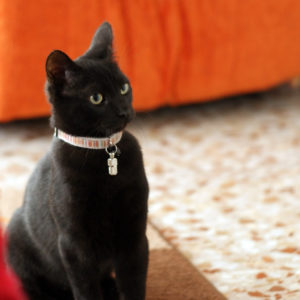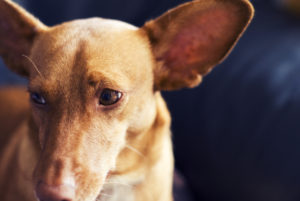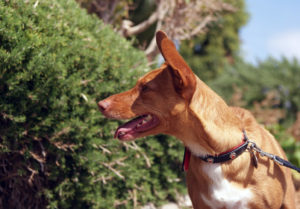
Many of us have pets and we want to capture their character on film, or more likely on screen nowadays, but sometimes this is easier said than done. Here are some tips that I’ve learnt whilst trying to photograph pets and some information that may help you the next time you try to shoot your pet – figuratively speaking of course!
Capture the personality of your pet

I think that this is the most important tip that I can give: try to capture the essence of your animal. You know your pet the best so use what you know about them to produce a photograph that gives a true representation of them. If your dog is lively and jumpy take them to the park and try to catch them in action – jumping in the air or running with a stick, if that’s what they do. On the other hand if your cat spends its days sitting on a favourite chair then use that scene in your composition. Your pet has its own character so try to capture that in the photo. You will enjoy viewing the photograph even more so in the future if you can look at it and say to yourself “Ahh, there he is again. He always does that!”. My dog, for example, tends to spend much of her day sleeping so many images I have of her are when she is laying down, eyes shut!
Use natural light

I always find that it is best to use natural light when photographing an animal. Often my dog will sit on the balcony or by a window so I try to photograph her then. Avoid flash if possible. Some people say that it can upset animals but besides that it can cause red-eye (or green-eye in cats) and gives an unnatural colour to the animals coat of fur. The only time flash works to your advantage is when an animal has very dark or black fur as it tends to absorb light and the flash on your camera can add detail.
Photographing your pet in direct sunlight can also be problematic as it also tends to give an unnatural colour to fur and if your pet has white fur you may find that photographing it in direct sunlight over-exposes the shot so try to capture your image in a less bright area. The best situation is to have sunlight coming from behind or the side or shooting on a bright but overcast day.
Get down to their level
Most of our pets are much smaller than us, (unless of course you are very fond of elephants and giraffes in which case you can ignore this paragraph) so get down to their level. If you stand above your pet they will look up to you which can give a wonderfully unique and funky perspective for a photograph but generally they will walk around you and you will simply get a shot of the top of their head and back! Lie on the floor or kneel on the ground and get level with their eyes for the photograph. Don’t make the pet come to you or position them where you want them. They will not be comfortable and the photograph will not truly represent them. Following them around and getting low to see the world through their eyes is a great way of capturing your pet.
Whilst you are low keep an eye out for table or chair legs though! Not only incase you bump your head, but they can become unwanted background distractions in your photographs.
Grabbing their attention

It has been quite frustrating at times trying to get a good photograph of my parents’ cat, especially when he was a kitten. He constantly runs around when I am there, playing with his toys or chasing sticks and he always seems to move faster than me and my shutter ever can! Of course he would eventually stop but invariably he would be facing the opposite way to the camera. I’d move but so would he, usually behind me out of camera shot…
We finally found that the solution was to grab his attention by squeaking one of his toys and then holding it up for him to look at. That gave me the split second needed to focus and shoot. In the picture here my mum is out of shot making funny faces at him… it kept us all amused!

Another trick that works, although it seems a little cruel, is to wait until they are dozy and just about to fall asleep and then squeak a toy to grab their attention. Their head will jump up and their eyes will be wide open and they will be alert. A great time to capture the shot you’ve been waiting for!
It’s all in the eyes
They say that the eyes are windows to the soul and this is even more so in pets. They can’t speak to us and tell us how they feel but we can see it in their eyes so focusing clearly on the eyes is very important. Try to capture the light from windows as a reflection in their eyes as it gives a wonderful professional style to the photo.
Fill the frame
One thing I am learning at the moment is to fill the frame. A close-up shot of part of a pet can be very endearing. The shot below is one of my favourites of recent shoots. Her head completely fills one side of the frame whilst the other side I left clear to give me some negative space. It is also interesting to photograph a part of the animal and not the whole creature. Maybe a paw, an eye, or even the teeth in growl mode! It makes a capture more interesting than the whole view and this gives a sense of intimacy and familiarity with the pet.

Pets and bokeh
Bokeh is the technical word for what is the background blur seen in photos behind the main area of focus or subject in focus. As in most portrait photography focusing on your pet and having background (or foreground) bokeh can create a wonderful atmosphere. Your eye is drawn to the animal and the bokeh provides a wonderful backdrop to the scene – your pet is the star! If you have a point-and-shoot digital camera you can use the portrait setting to achieve better bokeh, whereas if you have a DSLR use a larger aperture to create a shallow depth-of-field, thus giving soft looking bokeh.

Pets and people
Pets are often as much a part of the family as the rest of the clan so try to capture images of your pet interacting with your kids, parents or partner. The ensuing photograph makes a wonderful gift when framed for loved ones. There can often be an almost magical relationship between a child and their pet so if you can capture a moment of them together sharing a special time the result is a keepsake that will live in all of your hearts for years.

Experiment
My final tip for now is to experiment. Not every shot will be successful (I know mine aren’t) but when we try new things sometimes we may capture that amazing photograph that has a ‘Wow’ factor that people adore!
Above are just a few ideas to help you when you next try to photograph your pet. This is an ongoing experience for me and I have much to learn. On the internet (especially Flickr) there are thousands of people with amazing photographs of animal pictures which I sometimes view, trying to get other hints and tips. In the future when I have gained a little more skill I shall let you all know what more I have learned.
Thanks for reading and happy pet picturing!






